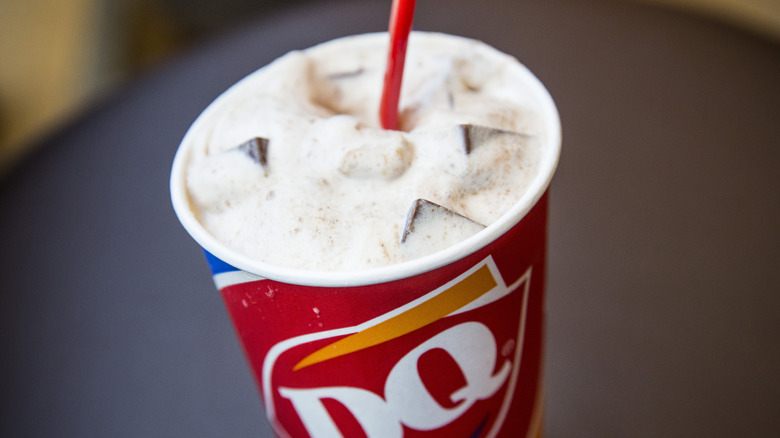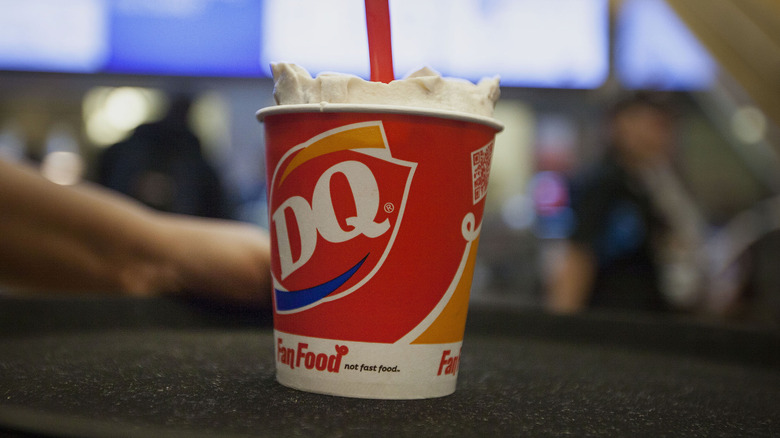Dairy Queen Employees Once Had To Crush The Candy For Blizzards By Hand
Dairy Queen Blizzards are a delicious frozen treat, and these days, they're much easier for employees to make than they once were. What sets Dairy Queen's famous Blizzard apart from other ice cream-adjacent treats are the candy and cookies mixed into the unique soft-serve and milkshake crossover. This wasn't always as simple as you might assume, though. In the past, Dairy Queen employees had to crush the mix-ins up by hand to achieve the perfect consistency.
The first Dairy Queen Blizzards were sold back in 1985, 45 years after the restaurant's first location opened. Unsurprisingly, it wasn't long before the Blizzard took off. What did take a while was candy companies' willingness to get on board. While broken-up candy bars were vital for making a perfect Blizzard, some candy manufacturers weren't so keen on selling crushed candy to DQ. Others refused to sell bars sans wrappers. This didn't stop Dairy Queen from making Blizzards, of course, but it did mean employees had to do quite a bit more work.
The Blizzard was contentious for candy companies
Some candy companies were on board with Dairy Queen's business model for the Blizzard. For example, L. S. Heath & Sons, creator of the Heath bar, began selling 7% of the candy it produced to Dairy Queen already crushed. As a result, the candy manufacturer saw a rise in success. In 1986, Donald White, general manager of L. S. Heath & Sons' industrial sales, told the New York Times, "[Dairy Queen has] become a very, very important piece of our business." In contrast, an M&M/Mars spokesperson was quoted in the same article as saying, ”We will not ship a broken or unwrapped bar.” In cases like the latter, each Dairy Queen location had to crush the shipped candy itself.
Robert Bardelli owned a Chicago-based Dairy Queen when the Blizzard was first being sold. ”It's tough crushing a case of Snickers when you have a store full of customers,” he explained to the New York Times. Since customers choosing their own mix-ins was a key part of the Blizzard's appeal, stores likely didn't want to stop offering certain candies just because they arrived at Dairy Queen intact. Plus, the new product was a big hit. Bardelli admitted that Blizzards were making his location an extra $300 per day. Considering how much more valuable $300 was in the '80s, it's easy to see why the added step of candy-crushing failed to dissuade Dairy Queen from selling this popular treat.

